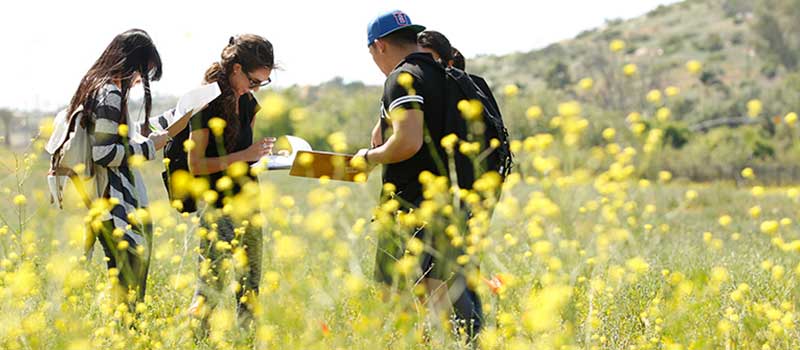Increasing Opportunities to Engage in High‐Impact Practices
Many institutions have focused on High-Impact Practices (HIPs), special opportunities for student engagement such as learning communities, service-learning, research with a faculty mentor, study abroad, internships, and culminating senior experiences—known for their positive effects on learning and retention (see G. D. Kuh & K. O’Donnell, Ensuring Quality and Taking High-Impact Practices to Scale, AAC&U, 2013). HIPs can result in life-changing educational experiences for participants because they:
- Demand considerable time and effort,
- Provide learning opportunities outside the classroom,
- Require meaningful interactions with faculty members
and students,
- Encourage interaction with diverse others, and
- Provide frequent and meaningful feedback.
The examples featured in this brief highlight how institutions have shared results from their NSSE High-Impact Practices report with faculty and staff and used these results to make the case for increasing opportunities for students to engage in High-Impact Practices to improve learning and retention on their campuses.
Visit our website for more information and NSSE resources related to High-Impact Practices.
TARGETING SPECIFIC GROUPS FOR HIP PARTICIPATION

California State University San Marcos
High-Impact Practices (HIPs) are a leading priority at California State University San Marcos (CSUSM), where an HIPs task force was recently created consisting of faculty, staff, and administrators involved in campus HIPs. This task force disaggregated participation in HIPs by several student characteristics and majors to identify student groups less likely to participate in HIPs. This strategy allowed them to develop interventions that direct those student groups (e.g., first-generation or low-income) to HIP opportunities. By using NSSE data to assess participation and its impact, CSUSM ensures that all campus stakeholders are working from the same reference points. These data have facilitated cross-division collaboration at the university, which serve as the framework for identifying needs and planning interventions. CSUSM’s most recent NSSE data illustrate their strategies are working, and they are encouraged to continue using NSSE to further inform practice.
INTEGRATING SERVICE‐LEARNING INTO THE CURRICULUM
NSSE data revealed that University of Georgia (UGA) students wanted more opportunities to engage in servicelearning experiences. In response, to integrate servicelearning into the formal curriculum, UGA created the Office of Service-Learning Fellows Program to assist faculty in incorporating service-learning into their teaching, research, and service. More than 70 faculty members from various disciplines have already participated in this program.
USING HIPs TO PREPARE STUDENTS TO SERVE AND LEAD
One of the ways Judson College fulfills its commitment to prepare students to “serve and lead” is by instilling a passion for learning, and one of the ways they fulfill this commitment is by encouraging participation in High-Impact Practices (HIPs). Because they believe that HIPs illustrate the academic community’s rigor in a way that caters to the needs and interests of those involved and that students’ success in these opportunities gives them skills for success in many contexts, Judson strives for high participation in HIPs among its students at all levels, facilitated by the college’s learning-focused community. Judson’s most recent NSSE administration showed that first-year and senior students are participating in HIPs at higher rates than students at peer institutions. For example, first-year students take service-learning courses at significantly higher rates than peers in all comparison groups. About these numbers, the college’s HIPs web page says, “We hope the numbers speak for themselves: Our results on the HIPs portion of NSSE show we’re serious about offering our students life-changing opportunities at every stage of their college development.”
DOCUMENTING HIPs

The University of Texas at Tyler
The University of Texas at Tyler (UT Tyler) has made use of its NSSE data in a number of ways. The president’s fall newsletter, distributed on campus and to the community-atlarge, has featured information from UT Tyler’s Snapshot— the easily digested summary of key findings in NSSE’s Institutional Report. The newsletter reminded faculty and staff that student engagement increases the likelihood of success and congratulated those whose efforts contributed to the institution’s improvement. The university also launched an initiative to document High-Impact Practices (HIPs) in undergraduate education. Using assessment rubrics drawn from NSSE reports and HIP criteria and curriculum-mapping templates, the institution has been documenting courserelated HIPs in each academic program. NSSE results have also been used in strategic planning to increase levels of overall student engagement.
EXPANDING AND MEASURING OPPORTUNITIES FOR HIPs
Tulane University’s Center for Engaged Learning and Teaching (CELT), developed as part of its Quality Enhancement Plan for regional accreditation, is the hub for fostering student engagement in four core areas: research, social innovation, classroom, and experiential. It also expands opportunities for students and faculty to participate in meaningful, High-Impact Practices (HIPs) and learning experiences that complement academic and career goals. To establish the warrant for CELT, Tulane used HIP measures including service-learning, undergraduate research, and internships, plus other indicators of interest in public service and research. NSSE data related to CELT’s mission—for example, items that measure participation in undergraduate research, service-learning, and other HIP activities—will be used as baseline indicators to monitor student participation and educational effectiveness. Tulane’s assessment plan includes mapping learning outcomes to assessment activities and using multiple assessment measures including NSSE.



